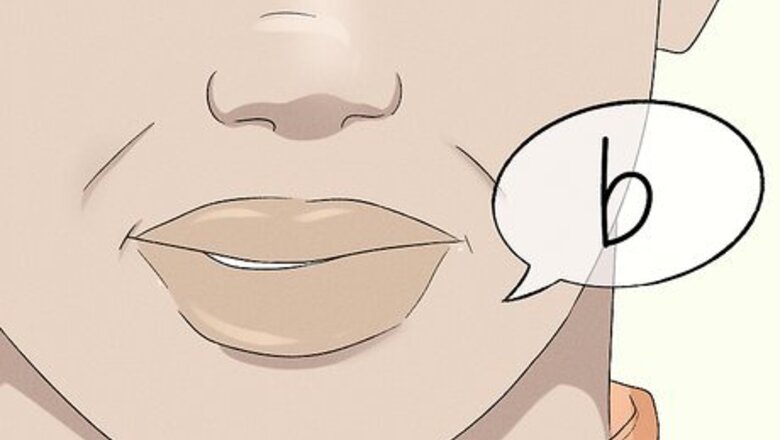
views
Basic Beatboxing Sounds
Understand that there are many sounds to master. To get started, you should master the three basic sounds of beatboxing: the basic kick drum {b}, the hi-hat {t}, and the K snare drum {K}. Practice combining the sounds into an 8-beat rhythm like this: { b t k t / b t k t } or { b t k t / b b k t }. Make sure to get the timing right. Start off slowly and build up speed later.
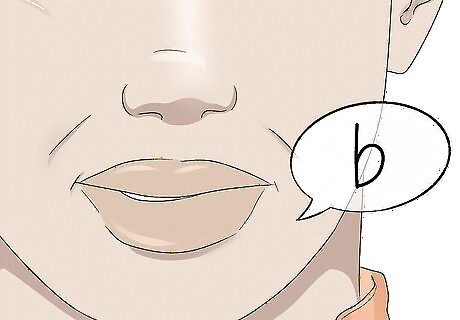
Practice the classic kick drum {b}. The simplest way to make the classic kick drum is to say the letter "b." To make it sound louder and punchier, you need to add more pressure with your mouth, and adding more air. This will create a lip oscillation. What you want to do next is shorten the lip oscillation so that there is only 1 short and punchy vibration. Another way to do this is to puff up your cheeks and push out the air.
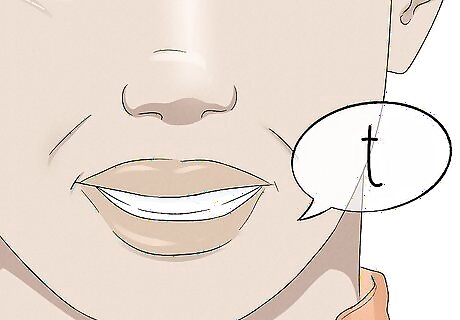
Next, try to duplicate the hi-hat {t}. Whisper the word "tiss" quickly and try and make the gap between the "t" and the "ss" unnoticeable. Breathe out for longer to create the open hat sound.
Try to tackle the K snare. The simplest way of making a rimshot snare sound is to say the letter 'k' whilst having the tip of your tongue in the same place as the hi-hat. Do the K snare, you add a breath after the rimshot. Make sure that you still have your tongue in the same position as you add the breath. Do the same thing you did with the hi-hat and make the transition between the rimshot and breath seamless You can also do this sound while breathing inward by doing the exact same steps but breath inwards instead of outwards.
Simple Beatboxing Sounds

After mastering the three basic beatbox sounds, it's time to move onto these simple techniques. These might be a little more difficult, but practice makes perfect.
Master the P Snares. This is done by doing the exact same thing as the kick drum, but then you add a breath after it. You should get a "puh" sound. Put your teeth behind your bottom lip as if you were saying the letter F while doing the breath. Once you mix them together, you should get the PF snare. Do the same thing as you did with the hi-hat and K snare and make the transition quick and crisp. You can also swap out the F for an S or SH for a PS or PSH snare. Try to stop making the "f's" stop just a millisecond or so after the "p." Lifting the corners of your mouth and holding your lips really tight when making the initial "p" will help it sound more realistic. You can also use the same technique to change the apparent pitch of the snare.
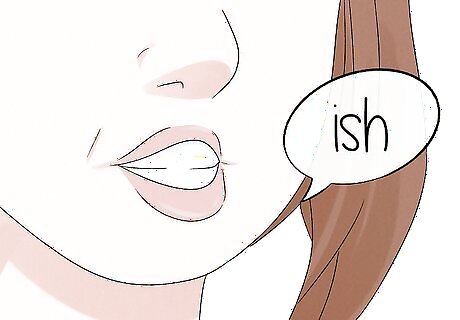
Add a cough snare to the mix. First say "ish." Then, try saying "ish" without adding the "sh" at the end, again going only for the initial attack. Make it very short, and you should get a sort of cough in the back of your throat. Add a loud whisper after that, and you will get the cough snare. Once you're comfortable with that, you can also add the "sh" on the end and you'll get another snare sound.

Add a spit snare. The spit snare is mostly used in trap beats since it's a very crisp and quick snare. You can also hum at the same time as this sound, allowing a to add some musicality to your arsenal. However, this sound is quite frustrating to learn so be patient. There are three variations of the spit snare: top lip, middle lip, and bottom lip. They don't vary much in sound and they're done in almost the same way, but some find it easier to do others. Try and find which one suits you the most. To do the top spit snare requires you to place your top/bottom lip tightly over the other, and blow. You should get a fart-like sound. If you let it out quickly, you will get the spit snare. Make sure that you fill your mouth with air instead of blowing so you can layer other sounds over it easier. Next, slowly push the air out. Once you're able to do that, quickly force the air out, that is the spit snare.
Add a reversed kick drum. This is a simple and easy sound to make. Stick your tongue out and slight pressure from both top and bottom lips. Once you've done that, just suck in air. Your tongue should be sucked in and your lips will close with a sound like a higher-pitched kick drum.
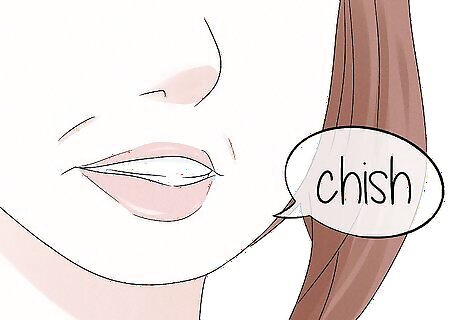
Don't forget about the crash cymbal. This is one of the easier sounds to make. Whisper (don't vocalize) the word "crash." Then, do it again, but this take the vowel out, going from "cr" straight to "sh" without little or no transition, and you'll have a basic crash cymbal. You can also make a sound like the cymbal but reversed. Place the tip of your tongue where you would for a hi-hat. Keeping your lips about a half-inch apart, breathe in forcefully through your mouth. Notice how the air blows past your teeth and tongue and makes a sort of small rushing sound. Then, breathe in forcefully again, and this time close your lips as your breathing in; they should sort of feel like they're popping closed, without making a popping sound.Beatbox Step 12 Version 3.jpg
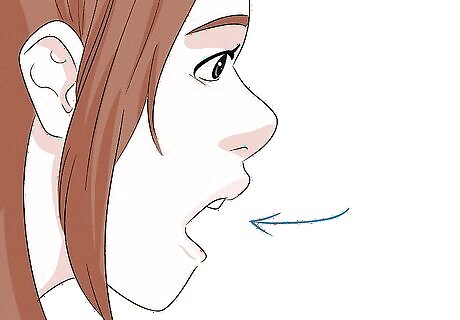
Don't forget to breathe! You would be surprised at the number of human beatboxers who pass out because they forget that their lungs need oxygen. You may want to start by incorporating your breath into the beat. Eventually you will gain a great deal of lung capacity throughout your practice. There are many sounds that can be done breathing inwards such as variations on the snare and bass sounds. Develop your inward sounds technique. One thing that puzzles people is how beatboxers can beatbox for a long time without actually taking a breath. Well, the answer is to make a sound and breathe in at the same time! We call these inward sounds. What is more, as you'll discover, some of the best sounds are made like this.Beatbox Step 14 Version 3.jpg There are many ways of making inward sounds. Nearly every sound that can be made outward can be made inward - although it may take some practice to get it right.

Hold the mic properly. Microphone technique is very important for performing or if you just want to enhance the sound made by your mouth. And there are different ways of holding the microphone. While you can just hold the mic as you would while singing, some beatboxers find that putting the mic between your ring and middle fingers and then gripping it with your first two fingers on top of the bulb and your thumb at the bottom results in a cleaner, more crisp sound. Try not to breathe into the mic while you beatbox. Many beatboxers deliver a poor performances because they hold the microphone incorrectly and thus they fail to maximize the power and clarity of the sounds they produce.
Intermediate Beatbox Techniques

Once you've acquired basic and simple skills, it's time to learn some intermediate techniques. Don't worry if you have trouble picking them up right away. With practice, you'll be able to do all of them eventually.
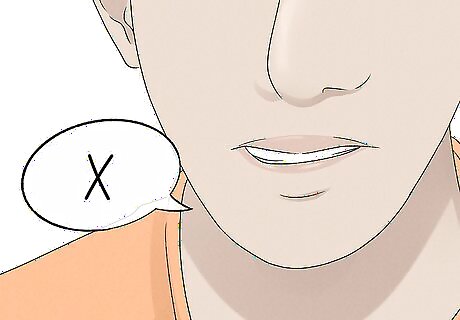
Develop a lip bass sound (this is also known as a lip oscillation) (X). To do a lip bass, start out like you're about to do a kick drum. Then let your lips loose so they flap when you push air past them, making sure to focus the vibration on on the front area of the lip. Then touch the tip of your tongue to the inside gum of your bottom teeth and push it forward to perform the technique. This sound can be pitched by adding more and less pressure with your lips. You can do a lip osccillation while humming if you harmonize or match the tones. Different sounds and pitches can be created by saying letters (while breathing out) like 's' and 'sh'.
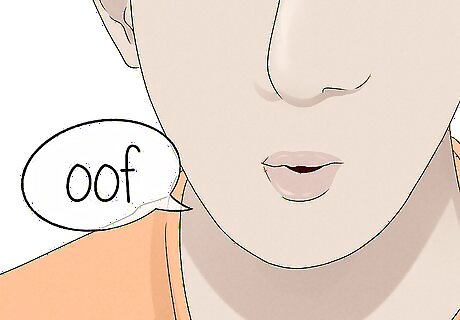
Work on a techno kick or throat kick technique (U). This is done by making an "oof" sound, as if you've just been hit in the stomach. Do it while keeping your mouth closed. You should be able to feel it in your chest.
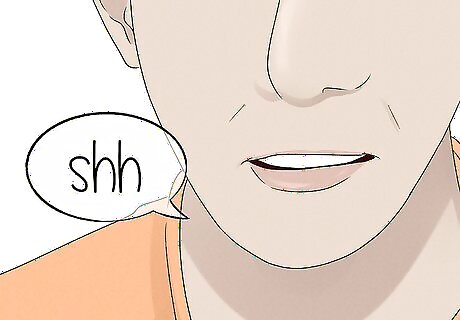
Add a techno snare to the mix (G). This is done the same way as the Techno Kick, but position your mouth as if you were going to make a "shh" sound. You'll still get the bass sound underneath.
Don't forget about rewind scratching. This is done by reversing the airflow of any of the previous techniques. A commonly misunderstood technique, scratching involves different tongue and lip movements depending on the instrument you are trying to "scratch" with. To understand better, record yourself laying down a beat. Then using a music program, like Windows Sound Recorder, listen to it in reverse. Some simple scratches can be done by breathing through a small hole in your mouth and chopping it by blocking the airflow with your tongue, doing a continuous k sound and chopping it with a short k sound, and breathing through a space between your teeth
Work on jazz brushes. Lightly blow out through your mouth while trying to sustain the letter "f." By blowing slightly harder on the beats 2 and 4, you'll have the accents.
Use tongue bass. Tongue bass is a very versatile, but easy technique to learn. One way to learn using this is to roll your 'rs'. Once you learn to roll your 'rs' you add more pressure to create the sound. You can pitch this sound by changing the shape of your mouth from a smile to a "o". There are many variations to this technique, such as teeth bass, which is a type of tongue bass where you place your tongue directly on your teeth.
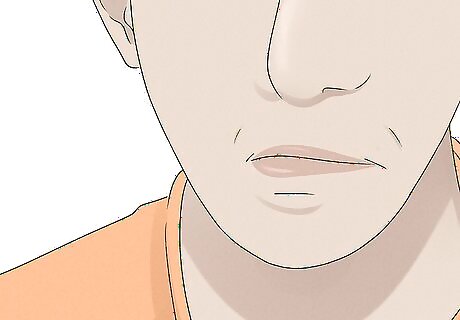
Practice humming the melody and beatboxing at the same time. This technique isn't as difficult as singing, but when you're just starting off, it is easy to get lost. To start, you must first realize that there are two ways to hum: one is from the throat (say "ahh") and the other is through the nose ("mmmmmm"), which is considerably harder to get used to but immeasurably more versatile. The key to humming and beatboxing at the same time is to start with a baseline or melody in mind. Listen to rap hooks, whether they be hummed or not (For example, listen to Parliament Funkadelic's "Flashlight" and practice humming the melody, then try beatboxing over top of it; James Brown is also great for melodies). Scour your music collection for baselines and melodies to hum, then try to put some of your beats or someone else's beats over top of it. It is necessary to learn how to hum a melody or baseline for several reasons, especially if you plan to learn to start singing. This is the area of beatboxing that takes some originality! If you've tried to beatbox and hum at the same time, you must have realized that you've lost of some of your proficiency with certain beat techniques (the Techno Bass and Techno Snare are severely limited, as well as the click roll becomes, if not totally unusable, very hard to hear). Learning what works takes time and practice. If you ever find yourself in a beatbox battle, don't forget that while your endurance and speed are important, using new and interesting melodies and baselines will always win the crowd.

You'll need to practice inward humming too. This is an advanced technique which is not widely used in the realm of beatboxing. There are several resources available on how to sing/hum inward. For the purposes of beatboxing, when you need to breathe really bad, it may be a good idea to hum inward. You can always continue humming the same melody, but the pitch (note) will change drastically. With practice, you can correct this pitch change to some extent, but many beatboxing experts who use inward humming decide to change the melody when switching from outward humming to inward humming.
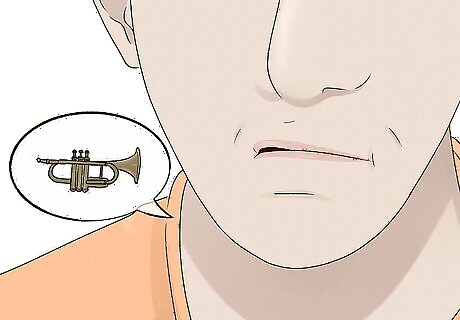
Adding trumpet sounds is a great way to mix it up. Hum falsetto (that's high pitched - like Mickey Mouse). Now, lift the back of your tongue to make the sound thinner and sharper. Add a loose, lip oscillation (classic kick drum) to the front of each note. Then close your eyes, let rip and pretend you are Louis Armstrong!

Practice singing and beatboxing at the same time. The key is to line up consonant sounds with the bass and vowel sounds with the snare. Don't bother adding a hi-hat, as even the best beatboxers have trouble in that respect.

Another variation is to create a throat bass. Start by pretending to clear phlegm from your throat or growling like an animal. The resulting sound will be scratchy, so adjust the back of your mouth until you get a steady pitch. After you've achieved this, to make the sweeping sounds, shift the shape of your mouth and that will change the timbre while maintaining the pitch. You can change the pitch by changing the vibration in different areas of your throat. Two variations of this are the vocal bassline and vibration bass. The vocal bassline is using throat bass and using your own voice at the own time. Once you find the harmony between the two sounds it can add a useful layer to sing and beatbox at the same time. Caution: doing this for an extended amount of time can cause temporary inflation. Remember to drink lots of water.
Singing and Beatboxing

Sing and beatbox. Singing and beatboxing at the same time may seem like an impossible task (especially at first). But it's actually quite easy. Below is a working sample that will help you get started. You can use this basic technique and later adapt it to any song. (b)if your (pff)mother (b)(b)on(b)(pff)ly knew(b)knew(pff) ("If Your Mother Only Knew" by Rahzel).

Listen to songs. Listen to the song you want to beatbox to a few times to find out where the beat goes. In the example above, the beats are marked out.

Sing the tune a few times with words. This will help you get comfortable with the song.

try to fit the beats with the lyrics. Most songs will have the beat in front of the words. In this case: "If" - Since the word "if" in our example starts with a vowel, it is easy to fit in the bass just before it, as though you were saying "bif." Note however, that the "b" must be low and if necessary, separate the beats from the words a little when you first start. "Mother" - The word "mother" starts with a consonant. In this case, you could drop the "m" and substitute it with the "pff" since they sound quite close when said together quickly. Or, you could stagger the word just a little so that the beat comes first, and the lyric slightly delayed. If you choose the first, you will end up singing "pffother." Notice that your top teeth contact your lower lip, which is what creates the m-like sound. If you can manipulate this, it will sound a lot better. "On" - For the double beat on "on," you can hum the pitch while doing "b-b-on," then come in straight away with "b pff-ly knew," all the while humming the pitch. For the "on," you might find that the sound breaks if you do the second bass beat. To remedy this, hum through your nose. This can be done simply by pushing the back of your tongue up to close off against your soft upper palate. This hum now comes out through your nose, and is not interrupted by what you do with your mouth. "Knew" - The word "knew" echoes and fades off.

Adapt this skill. These steps can be adapted for any song with a beat. Keep practicing, with different songs and soon you will be able to ad-lib more easily.
Technical Beatbox Techniques
An easy way to do a technical beat is to do a continuous C sound (not K snare K sound, but the K sound you would do while saying "cat"), and a short hi-hat repeatedly.
Another easy way to do a technical beat is by doing a short hi-hat, C sound, then a rimshot.




















Comments
0 comment